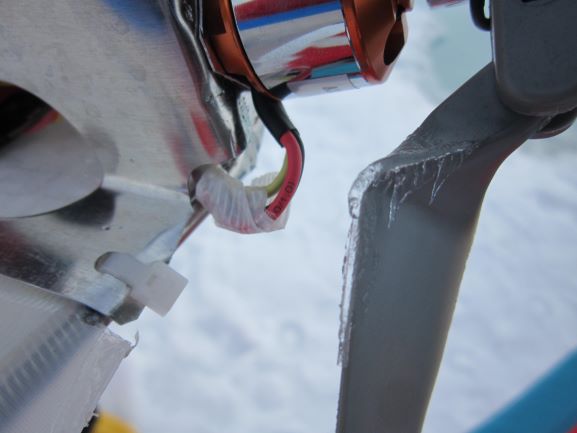by Radiance Calmer, a CIRES postdoctoral researcher
If you think about the weather in the Arctic and the previous MOSAiC legs, you might describe the extreme temperatures, -30°C, and strong winds during storms. The current conditions during Leg 4 are very different! We are fully in the melting season; temperatures are around -1 to +1 °C at the surface, with weak winds and a lot of fog! And fog means limited visibility, which is a rather strong constraint for our drone flights… The conditions are also changing very fast, and constantly checking the weather forecast is not really helping. But this is exactly why we are here with our drones: to make these measurements in this changing environment; these precious profiles of in-situ observations of the atmosphere and to eventually improve our models! More reliable weather forecast would certainly be helpful for planning our flights. We are out on the ice as much as we can to make sure to fly in a window when the fog lifts, when blue sky appears above us and provides the opportunity to fly the Datahawk up to 1000 m. Even if we are not flying in a cloud, sometimes the cold and cloudy air closes around the drone during the profile. Then, we intensely monitor the battery consumption and the airspeed. Abrupt changes in these parameters would indicate ice deposition on the airframe and the propellers. Icing issues are well-known for the manned aircrafts and are also a risk for drones. Until now, even if the Datahawk has been flying in these icing conditions, the drone has always come back safely! We have been several times amazed by the thickness of the ice on the wings and the propellers, and we are extra cautious in drizzle conditions with freezing temperatures. These are the challenges for our drone measurements of the Arctic summer!

